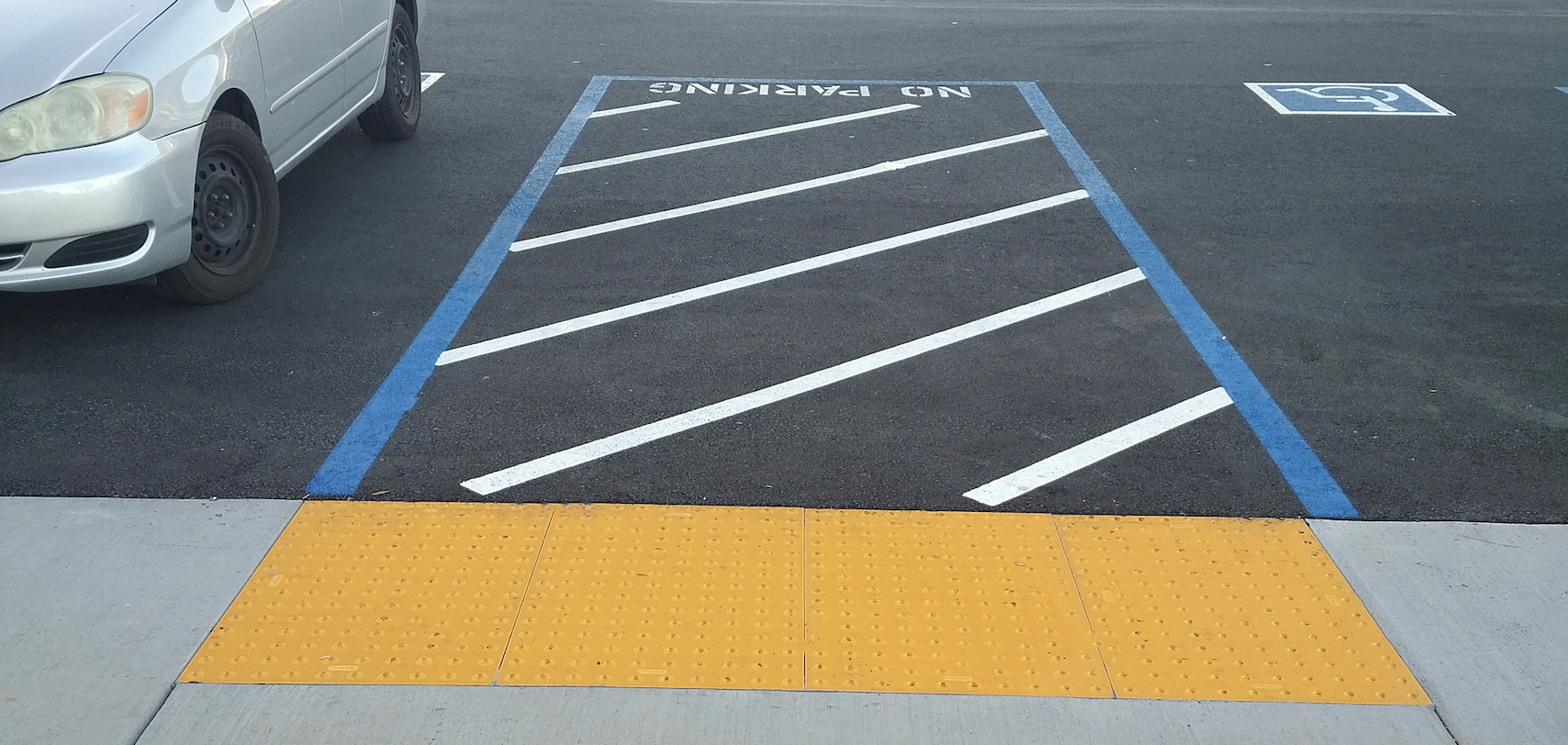
Why Every Parking Lot Needs Detectable Warning Surfaces
Parking lots are often overlooked when considering pedestrian safety, but they are busy areas with constant interaction between vehicles and pedestrians. This interaction can be hazardous, especially for individuals with visual impairments. Ensuring that these environments are safe and accessible for everyone is not just a legal requirement but a moral imperative. Detectable warning surfaces (DWSs) are worthwhile in achieving this goal, providing necessary cues to navigate these spaces safely.
The Importance of Detectable Warning Surfaces
Detectable warning surfaces are textured ground surfaces designed to provide a tactile cue to visually impaired individuals. These tiles, commonly found at the edges of sidewalks, transit platforms, and street crossings, are increasingly used in parking lots. Their primary function is to alert pedestrians to potential hazards, like the transition between a sidewalk and a vehicular path, thereby preventing accidents.
For parking lots, where the movement of vehicles and pedestrians intersects frequently, the implementation of DWSs is necessary. According to the U.S. Centers for Disease Control, there are an estimated 6 million Americans who have a visual disability, and 1 million have blindness. These individuals rely heavily on tactile and auditory cues to navigate public spaces safely. DWSs provide an essential layer of safety by creating a non-visual warning system that complements other visual cues like signage and pavement markings. This combination of tactile and visual signals provides a comprehensive safety net for all parking lot users.
Enhancing Pedestrian Safety
The strategic placement of detectable warning surfaces in parking lots can significantly enhance pedestrian safety. Common areas for installation include:
- Crosswalks: Placing DWSs at the beginning and end of crosswalks keeps pedestrians aware when they are entering or exiting a vehicle pathway.
- Sidewalk Ramps: Installing these tiles at the bottom of the ramps clearly indicates the transition from sidewalk to street level.
- Parking Spaces: In an accessible parking space, DWSs can delineate the boundary between the parking area and the pedestrian pathway, ensuring safe navigation for individuals with disabilities.
By providing these tactile cues, DWSs help prevent trips and falls, guide pedestrians safely across vehicular routes, and ensure compliance with the Americans with Disabilities Act (ADA) standards, which mandate the use of detectable warnings in specific locations. The ADA Accessibility Guidelines (ADAAG) specify the need for detectable warnings on curb ramps and hazardous vehicular areas to enhance safety for visually impaired individuals.
Durable and Reliable Solutions
At StrongGo Industries, we understand the importance of durability and reliability in safety products. Our TekWay High-Performance ADA Systems, including detectable warning surfaces, are engineered to withstand harsh environmental conditions while maintaining effectiveness. Manufactured with high-quality materials, TekWay ADA Domes are designed to resist wear and tear, ensuring long-term functionality.
Our DWSs are robust and easy to install and maintain, making them ideal for parking lot applications, where heavy foot traffic and exposure to the elements are common. The distinctive dome pattern and bright color options enhance visibility and tactile recognition, providing an additional layer of security for everyone. Investing in detectable warning surfaces is not just a matter of compliance; it is a commitment to the safety and well-being of all parking lot users.
Ready to start your project? Contact us today at csd@stronggo.com or visit here for more information.


